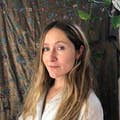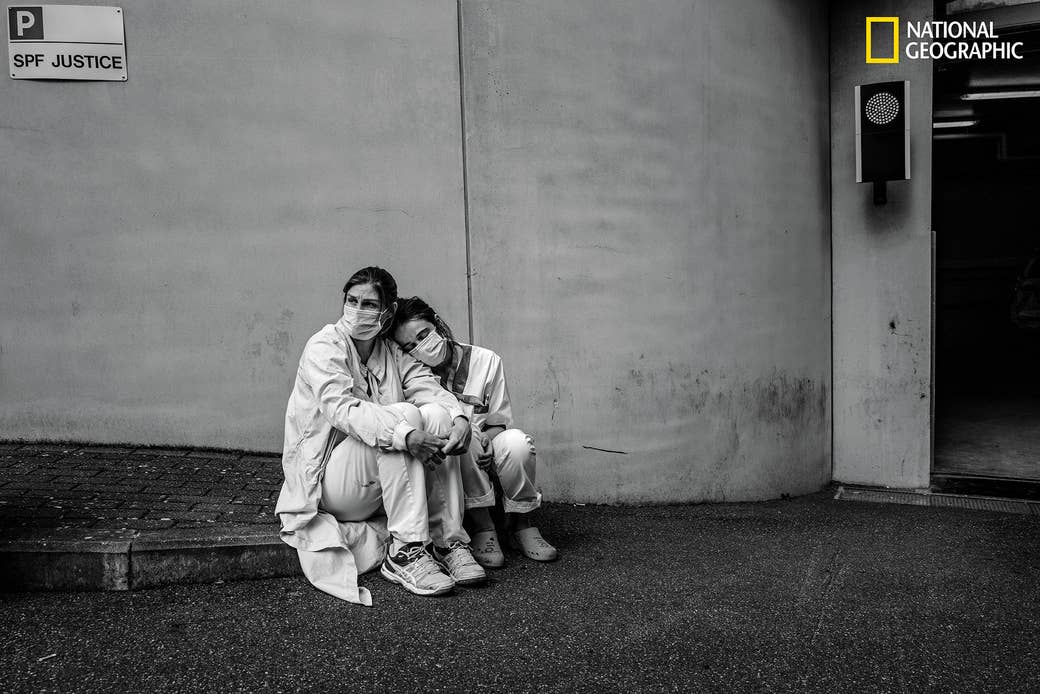
Thank goodness that's over — 2020 was challenging to say the least. While the year was terrible and hard and stressful, we can't say that it was all bad.
The loneliness of isolation has proved to be a fertile space for creative play, ingenious approaches, and a broadening of possibilities. Many museums are now offering their exhibitions online — available to global audiences. From endless doomscrolling, we've found new talent, new dance moves, and new ideas in unexpected spaces. The historic protests against police brutality have mandated that the fight for racial justice take place not just in the streets but continues in offices, at conferences, and in everyday conversations.
And from this period of painful growth, we're excited to see what is next. We spoke with 11 visual curators about what they are looking forward to in the new year.
What are you looking forward to in 2021?
Jacqueline Bates, photography director at The California Sunday Magazine: Besides the vaccine, hugs, and restoring the US to a post-Trump reality, I’m looking forward to Oakland-based filmmaker and photographer Adrian L. Burrell’s San Francisco Museum of Modern Art commission It’s After the End of the World, Don’t You Know That Yet, which will use Oakland’s murals painted on the boarded-up storefronts recently painted on during the recent Black Lives Matter protests, paired with imagery of his grandmother, mother, and sister, as a collective self-portrait of Black lives in American society. He’s an incredible talent, and we were lucky to feature his short film about his grandmother’s incredible life in West Oakland, called Mama’s Babies, in our recent Pop-Up Magazine show.
Tara Pixley, photographer and cofounder of Authority Collective: Generally, I'm looking forward to a world that has taken the health crisis of 2020 as an opportunity to recognize that we are an always interconnected global community and that our survival as a species depends on us working together to address the most pressing issues of our time. Visually, I'm looking forward to seeing that sentiment realized in photography and within the photography community itself. We need each other and we need to convey the truth of that through our images in the coming year and always.
Jehan Jillani, visual editor at the Guardian: I hope to reconnect with the photo community in person at portfolio reviews, conferences, or just over drinks. These in-person interactions were always such an important reminder of how rich and interconnected our professional and personal worlds can be, and I miss that a lot. Also, I cannot wait to go to museums and galleries without having a panic attack!
Eve Lyons, photo editor at the New York Times: I’ve had a multitude of conversations with photographers in 2020 about how they are reassessing their priorities within their practice. We have been challenged to reimagine how we are telling stories, making stories, sharing stories. 2020 gave us a lot to make images about; it gave us space, whether we liked it or not, for thought and reflection. I predict 2021 will be an even bigger year for visual storytelling in response to 2020. I’m looking forward to how its evolution will take shape.
Karen Irvine, curator at the Museum of Contemporary Photography in Chicago: In 2021, I am very much looking forward to presenting two major exhibitions that address urgent social issues, one about reproductive health and the other about gun violence in the United States. Both of these topics are pressing and have racist, unjust histories.
Amanda Hajjar, director of exhibitions at Fotografiska New York: Welcoming more people to the museum! Operating at 25% capacity is necessary during COVID, but we're so looking forward to having more people and energy fill our spaces.
Pauline Magnenat, founder and editor of Rocket Science Magazine: I look forward to 2021 for a lot of reasons! New beginnings, a lot less stress and anxiety. Obviously, the vaccine! I hope the job offers will pick up and that the overall mood will shift once we find some sense of normalcy again in the new year. I just hope it comes rather sooner than later because so many people have lost someone and/or something in 2020.
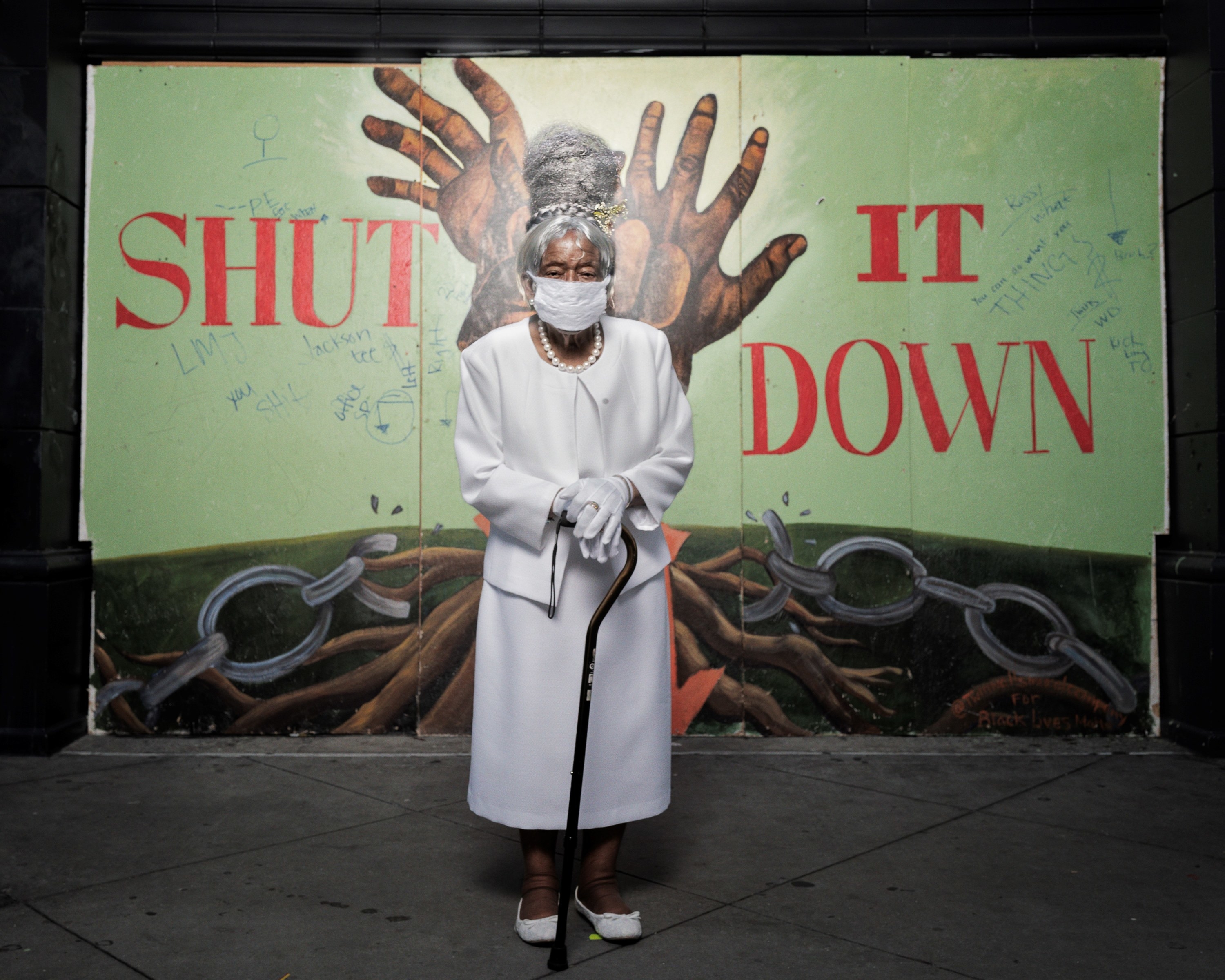
Creatively speaking, what was the most challenging part of 2020, and how did you work through it?
Whitney Johnson, vice president of visuals and immersive experiences at National Geographic: The most challenging part of 2020 was working through all the health and safety restrictions necessitated by COVID-19. Our photographers’ safety is always a concern, whether at the front lines of a conflict or battling a wildfire in California or atop Mount Everest. But as one of our photographers, who had covered Ebola in the DRC just a year earlier, told us: “The biggest difference with COVID-19 is that my primary concern has shifted from being about my own safety to whether I am unknowingly putting anyone else at risk.”
Dilys Ng, photo editor at Time magazine: Creating consistency, with its production limitations, in portrait portfolios took a bit to navigate at the beginning. I learned to live with the fact that it’s OK to not have the perfect solution during a pandemic!
Kristen Joy Watts, visual curator of @design, Instagram: 2020 was filled with plot twists, uncertainty, grief, and a turn — at last! — toward long-overdue change. We got through it — and created some of @design’s best work through collaborating with creators we were most inspired by — like our partnership with @BrooklynMuseum, the curator @SirSargent, and the artists @ChellaMan, @QuilLemons, and @ChloeWise_, to recognize — and provide grants to — student artists who would ordinarily have been hanging their end-of-year shows. Another highlight was our collaboration with the curator Rujeko Hockley @rjkhckly to mark Juneteenth by featuring some of the most powerful protest art that was being shared by and in support of the Black community.
Clément Chéroux, the Joel and Anne Ehrenkranz chief curator of photography at the Museum of Modern Art, New York: The most difficult part of this annus horribilis was to witness pain and death as the world was reconfiguring itself. We need to reinvent ourselves, keep standing strong, and continue our own path.
Jillani: The growth of misinformation across social media platforms — and simultaneous budget cuts across newsrooms — made it difficult to stay motivated at times. Luckily, the Guardian US is a pretty reader-oriented organization. Having a clear understanding of what our audience wanted and why kept me grounded — despite all the noise.
Lyons: Photography is excellent at capturing emotion and intimacy so living through a global pandemic, with a virus that threatens the safety of every human interaction, is a giant obstacle for image taking. We had to find new ways to work with the medium whether that was evolving the virtual shoot, sending cameras into spaces and directing shoots, turning the camera on oneself, etc. While 2020 was arguably one of the most challenging years for photography, it was also one of the most creative I’ve seen. I was inspired by the photo community and how they persevered through this time.
Irvine: After the museum had to shut its doors in March, the most challenging problem we faced was how to keep connected to our audience. We created extensive digital programming using Zoom and other platforms, and these programs were well attended. There was a clear appetite for art and learning during lockdown. We also realized some of the advantages of virtual programming — for example, no object from our collection was off-limits when presented digitally, whereas normally some are too big or in off-site storage. We were also able to provide viewers with behind-the-scenes access to artists’ studios. And people were able to watch the programs from all over the world.
Magnenat: I’m based in Europe and when the first lockdown happened, in early March, everything froze. I had about 80% of an issue ready but couldn’t commission people as I didn’t want anyone to take risks for Rocket Science. To be honest, 2020 was not the year I felt most creative, dynamic, or optimistic! But the forced pause actually led me to completely rethink and redesign Rocket Science, and there are exciting things happening soon. Being a freelancer, it was definitely a challenge financially throughout the year. Work seemed to pick up at the end of the summer again, which was reassuring and needed. But I’ve definitely struggled, as did so many photographers and creatives around the globe.
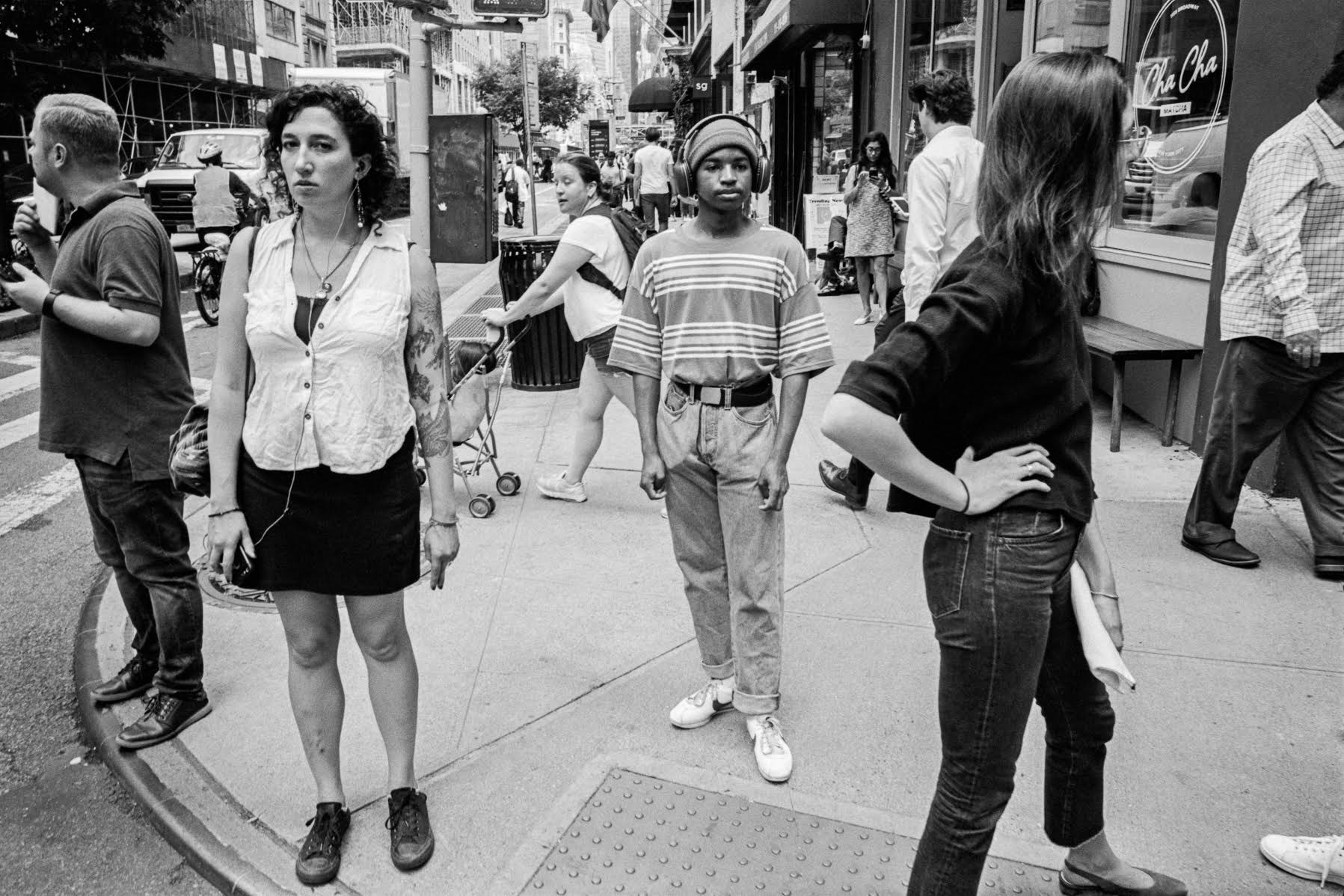
What work inspired you in 2020?
Pixley: This year I was inspired by the community-building, people power, and emphasis on collaboration I saw across many industries and spaces. Working with the “Photo Bill of Rights” authors was one of the most inspiring things I've experienced in my career; also seeing projects like Science for the People's work around the Green New Deal; the incredible public mobilization and education work by the Movement for Black Lives and BLM; advocates of the Constitution and democracy getting people out to vote and then voraciously defending those votes — that was all so galvanizing. I'm inspired to make work that shows the best of who we can be as humans, so all of the collective action around human rights and social justice activism has been wonderful to see.
Johnson: Where to begin? I was inspired by the work of so many of our photographers who covered the coronavirus pandemic in their own countries. In Belgium, Cédric Gerbehaye made some of the best work I have seen on the medical front lines of the pandemic. And Wayne Lawrence’s portraits of loss capture the grief that so many of us are feeling and highlight real families and emotions to the ever-mounting death toll in the United States. I was so impressed by our photographers who found new ways to work in the pandemic: Jasper Doest, one of our wildlife photographers, spent time documenting the pigeons who came to visit his apartment in the Netherlands. Tamara Merino, trapped at home in Chile in near-total lockdown, has been exploring the intersection of motherhood and nature amidst the pandemic. And Pari Dukovic has continued to make some of the most spectacular portraits — all remotely. As our country faces a reckoning, Jon Henry’s extraordinary photos of Black mothers and sons show how art can be a powerful form of protest. And Kris Graves’ work on our country’s reckoning, including his powerful image on the cover of our January issue, encapsulates this moment — or, as he says, shows how so many people are fed up with the status quo.
Ng: This is not specific to photography, but the work accomplished by community for community is what inspired me the most. From the funds and visibility raised for Pictures for Elmhurst and See in Black, to the community fridges and library installed by Playground Coffee Shop in Brooklyn.
Lyons: I tend to be most inspired by individuals. Earlier this year, Kiese Laymon wrote an essay about Black boyhood to accompany a personal project by photographer Andre Wagner. I read that piece about 20 times as well as his book Heavy this year. Graphic designer Tracy Ma (who happens to be one of my colleagues) is another individual whose work inspired me this year. I have watched her reimagine the possibilities of storytelling in an editorial context. Her innovation is a huge source of inspiration for me to push visual boundaries. I also love the Landa Conservatory project by Jessica Lehrman and Phillip T. Annand. A video series dedicated to using nature cinemagraphs to function as a way to self-soothe, something we all needed a little help with this year.
Bates: I was a mentor for the Joop Swart Masterclass, which is normally just a weeklong intensive program held in Amsterdam. But this year we all met virtually over a period of five months, so the mentors could work with the photographers from their original pitch to the final edits. There were 24 participants this year from 20 different countries. Each project is remarkable — you can view it here.
Watts: @jeremyoharris’s “Coronavirus Mixtapes” were my 2020 Instagram soundtrack and provided the map I needed when I got lost on the Internet. My spirits were buoyed by Instagram comedians including @majimb.o, @servideo, and @chloeiscrazy. Some of my favorite Reels were from @notoriouscree and @traceloops. Also, @ghettogastro’s Gastronomical Cribs and @museummammy’s “Black Power Lunch Hour” brought us closer.
Chéroux: Reading Index Cards: Selected Essays (2020) by photographer, writer, and filmmaker Moyra Davey.
Hajjar: I’m so inspired by the creative ingenuity of some of the artists we’ve worked with in 2020. Taking projects online, donating prints to great fundraisers, publishing their own newsletters and websites and books. So many artists have been incredibly creative and industrious during a very difficult year. I really appreciate that salt of the earth/“let’s make things happen’ attitude. Larry Fink has kept us on our toes with collaborative ideas and fun projects. More to come in 2021!
Magnenat: In the spring, a lot of photographers I follow on Instagram were trying to make work from home, some more successfully than others but it was definitely heartwarming to see artists staying inspired and working. I remember the photos of flowers and nature Ana Cuba took while going on walks around London, Justin J Wee brilliantly photographing his friends over Zoom, and the beautiful photographs Kennedi Carter took of her family celebrating Easter.
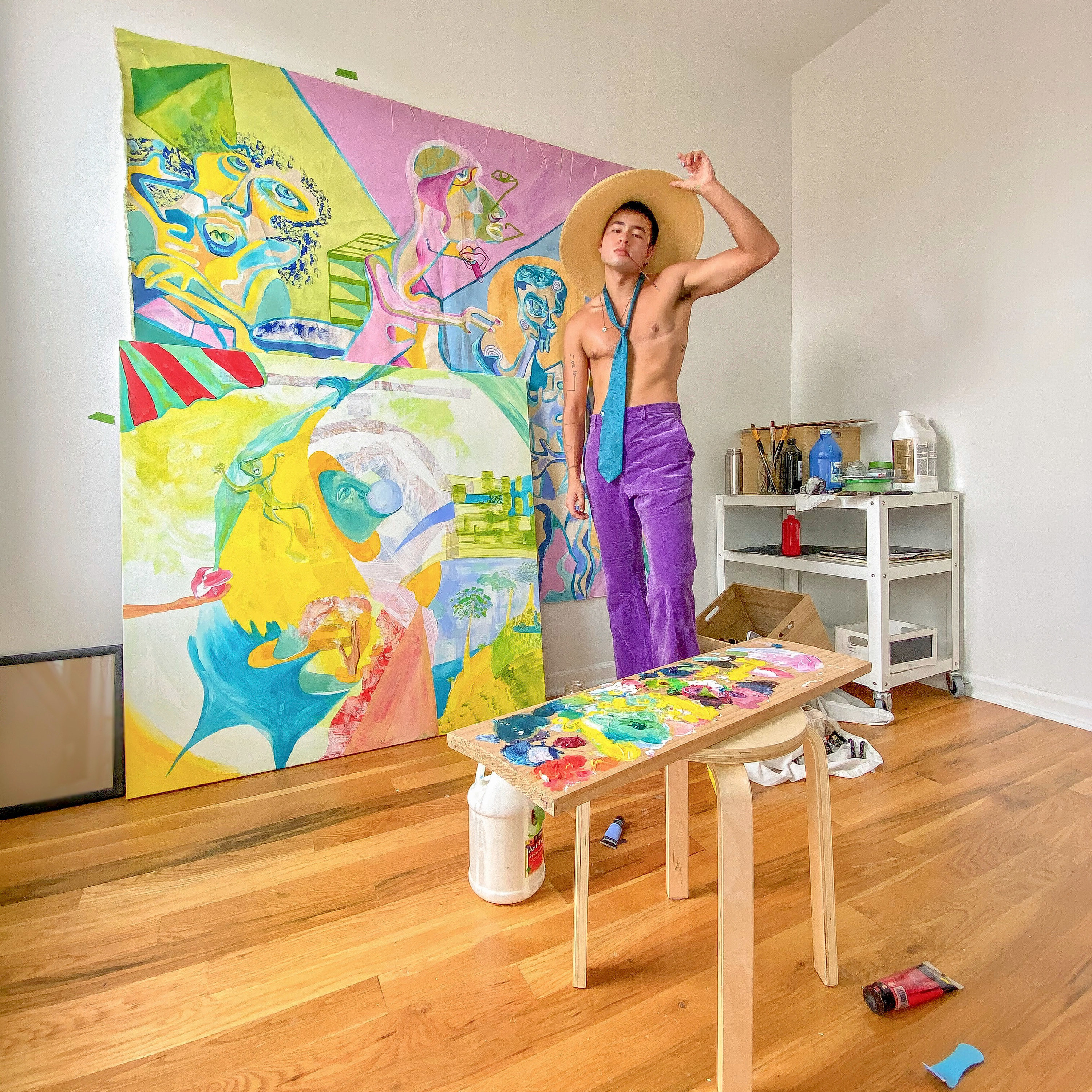
What are you hoping to see changed in 2021?
Lyons: A little less cancelation and a bit more conversation.
Johnson: Safer working conditions for photographers. Uncompromising commitment to diversity, equity, and inclusion in our industry.
Bates: Many photo editors, art directors, and agents are making changes in their rosters and hiring practices to include diverse storytellers and also stories about a broader range of people and experiences. This ever-evolving conversation needs to continue not just in 2021, but toward a permanent shift.
Chéroux: I hope photographers can get out of lockdown soon and return to their favorite playground: the real, streets, life.
Jillani: Journalistically, I hope we can see a lot more visual-first journalism, whether it is photographer-led features, data-driven investigations, or even comics. I want more newsrooms — besides just the usual suspects — to understand the value of such work, and give it more space to breathe and shine.
Mostly though, I really hope we don’t get complacent again — both within our industry and the country at large.
Irvine: Museums are going through a reckoning right now in terms of their inherently racist structures. I am excited to see deep, revolutionary changes in the field as museums work to decolonize and become truly anti-racist institutions. This includes making sure that all cultural sector workers are fairly compensated for their labor, from museum employees to artists.
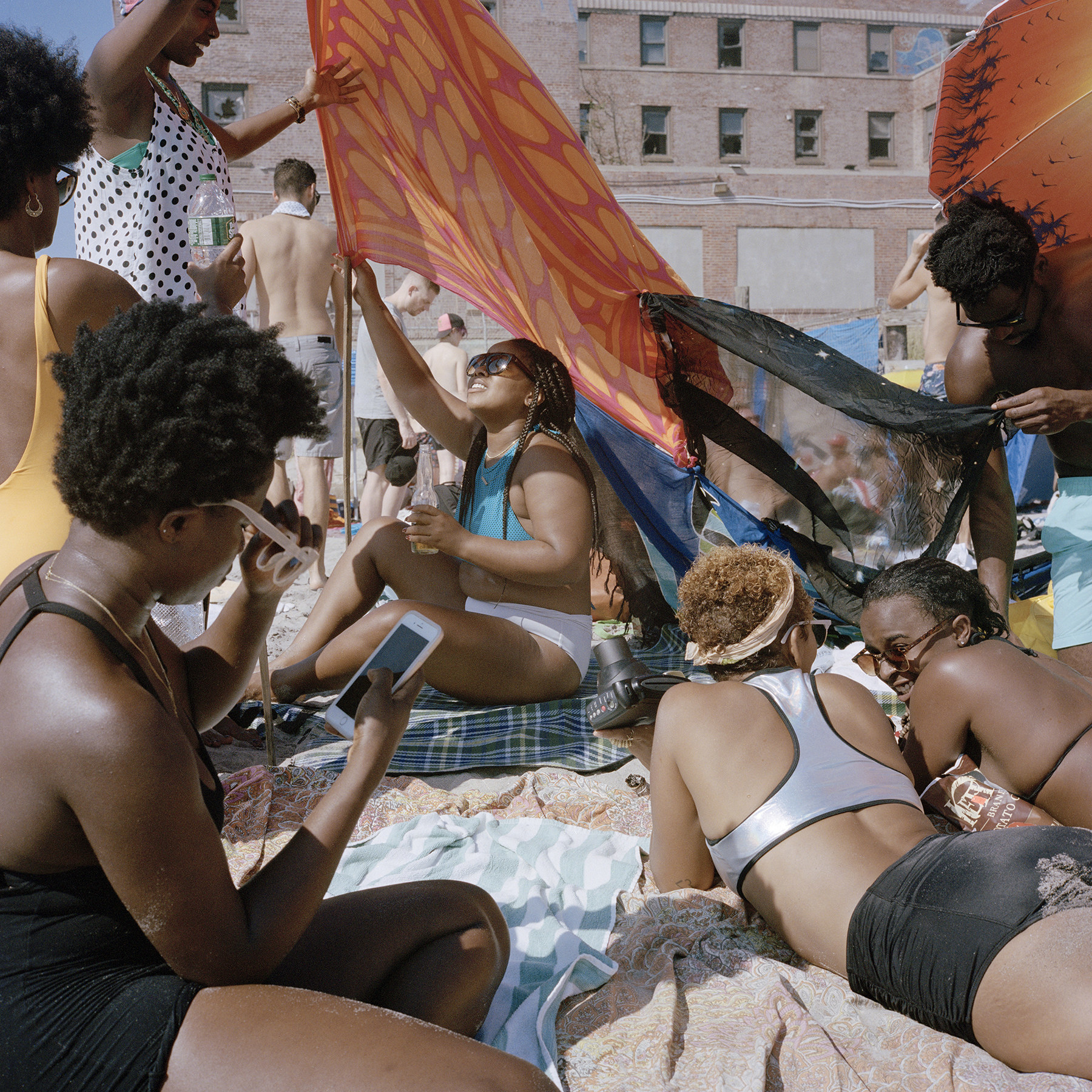
What should we be keeping an eye on?
Bates: Deana Lawson is the first artist working in photography to receive the Hugo Boss Prize, and her work will be presented as a solo exhibition at the Guggenheim Museum in 2021. Everything she does is magic. Last year I commissioned her to photograph Melina Matsoukas for our cover. There are many wonderful books coming out in the spring. I’ve been spending so much time in Brooklyn recently, and when I get back to California will be right around when Irina Rozovsky’s In Plain Air will be released — her book of photographs taken over the course of 10 years in Prospect Park, released by Mack, which I’ll admire from afar, dreaming of my time there this fall and winter.
Watts: @SummertimeGallery, a gallery in Brooklyn devoted to dissolving the barriers that have traditionally existed between artists with disabilities and the broader art world.
Chéroux: More than ever, books have become an essential part of the way photographers express themselves. This is where much of the photographic creativity to come will be found.
Pixley: We should definitely be keeping an eye on the suppression of free speech by false speech and fearmongering based on disinformation. We should be looking out for more brilliant photography and other creative work around the home space ("homescapes"!). I hope we can keep an eye out for a rapidly shifting photojournalism and editorial photograph industry that is equity and ethics-focused, one that takes many more perspectives, lived experiences, and knowledges into consideration than it ever has before.
Jillani: I am curious to see how and if photographers will find their own version of Substack. I saw that photographers Daniella Zalcman and Andrew Cenci have started their own Patreon, which seems like a smart idea. It’d be cool to see a membership model like that gain momentum. Art is labor and we need to start paying for it again.
Irvine: Keep an eye on smaller institutions that are supporting emerging artists in innovative ways through exhibitions, commissions, prizes, and publication opportunities, both in person and online, as well as artists who are using their work as a form of true activism. I’m thinking of artists like Zanele Muholi, whose work calls for advocacy for LGTBQ+ communities in South Africa and beyond, and Chicago’s own Tonika Johnson, whose Folded Map project gets residents in Chicago from extremely different neighborhoods to connect with one another. It’s exciting how these projects are finding new ways to use art to spark discussion and change.
Hajjar: Keep your eye on Naima Green. Both commercially and with her own work. She puts so much thought and care into all her projects. Texas Isaiah and Laurence Philomène. These are amazing artists that have big careers ahead of them.
